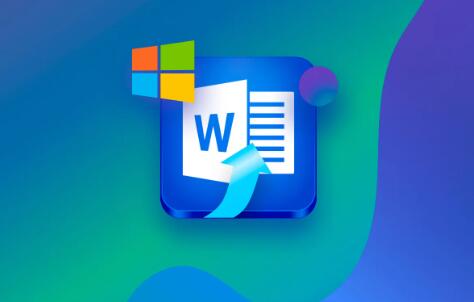Recovering deleted Word documents on Windows 10 can involve several methods, depending on how the files were lost and your system settings.
1. Check the Recycle Bin
Open the Recycle Bin: Double-click the Recycle Bin icon on your desktop.
Search for Your File: Look for your deleted Word document. You can sort files by date or search using the search bar.
Restore the File: If you find your document, right-click on it and select “Restore.” This will return the file to its original location.

2. Use File History
If you have File History enabled on your Windows 10 system, you can recover previous versions of files or folders.
Open File Explorer: Navigate to the folder where the document was originally saved.
Select “Home”: At the top of the window, click on the “Home” tab.
Click on “History”: This will show you the File History for that folder.
Browse Versions: Use the arrows to browse through different versions. Once you find the desired version, select it and click “Restore.”
3. Restore from Previous Versions
Windows 10 automatically creates restore points that can allow you to recover older versions of files.
Right-click the Folder: Right-click on the folder where the deleted document was stored.
Select “Properties”: In the context menu, click on “Properties.”
Go to the “Previous Versions” Tab: Here you can see if there are previous versions available.
Select and Restore: Choose a version from the list and click “Restore” to recover the file.
4. Use Microsoft Word AutoRecover
Microsoft Word has an AutoRecover feature that may save a copy of your document.
Open Microsoft Word: Launch Word and check if it automatically opens with the Document Recovery pane.
Look for AutoRecover Files: If you don’t see the Document Recovery pane, go to:
File > Info > Manage Document > Recover Unsaved Documents.
Search for Your Document: Browse through the list to see if your file is available for recovery.
5. Search for Temporary Files
Sometimes, Word creates temporary files that may help in recovery.
Open File Explorer: Press Windows + E.
Navigate to Temporary Files Location: Enter %temp% in the address bar and hit Enter.
Look for Files: Search for files that begin with “~” or end with “.tmp” and check if any of these correspond to your lost document.
6. Using Data Recovery Software
If the above methods do not work, you may need to resort to third-party data recovery software. Some popular options include:
Recuva: A user-friendly tool for recovering deleted files.
EaseUS Data Recovery Wizard: Offers a free version for recovering a limited amount of data.
Disk Drill: Another reliable tool that can recover various file types.
Stellar Data Recovery: A comprehensive recovery solution for files from different storage devices.
To use these tools:
Download and Install the Software: Follow the instructions on the software’s website.
Run a Scan: Start a scan of your hard drive or specific location where the file was lost.
Preview and Recover: After scanning, preview the recoverable files and select the Word document to recover.
7. Check Cloud Backups
If you use cloud services (like OneDrive, Google Drive, or Dropbox), check if your document was synced and can be restored from there.
Log into Your Cloud Account: Navigate to the folder where you saved the document.
Look for Previous Versions or Deleted Files: Many cloud services offer recovery options for deleted files.
8. Professional Data Recovery Services
If your document is crucial and you cannot recover it using the methods above, consider contacting professional data recovery services. They can recover files from damaged drives, but this option can be costly.
Tips for Prevention
Regular Backups: Ensure regular backups of your important files, either on an external hard drive or in the cloud.
Enable File History: Set up File History in Windows to automatically back up files.
Use Version Control: For important documents, consider using version control software or regularly saving incremental versions.
Losing a Word document can be distressing, but with the right steps, recovery is often possible. Start with the simplest methods like checking the Recycle Bin and using File History, and if necessary, move on to recovery software or professional services. Always remember to maintain good data hygiene through regular backups to minimize future risks.
About us and this blog
Panda Assistant is built on the latest data recovery algorithms, ensuring that no file is too damaged, too lost, or too corrupted to be recovered.
Request a free quote
We believe that data recovery shouldn’t be a daunting task. That’s why we’ve designed Panda Assistant to be as easy to use as it is powerful. With a few clicks, you can initiate a scan, preview recoverable files, and restore your data all within a matter of minutes.
Subscribe to our newsletter!
More from our blog
See all postsRecent Posts
- Data recovery salt lake city utah 2025-04-18
- Data recovery sacramento 2025-04-18
- Data recovery miami 2025-04-18

 Try lt Free
Try lt Free Recovery success rate of up to
Recovery success rate of up to









